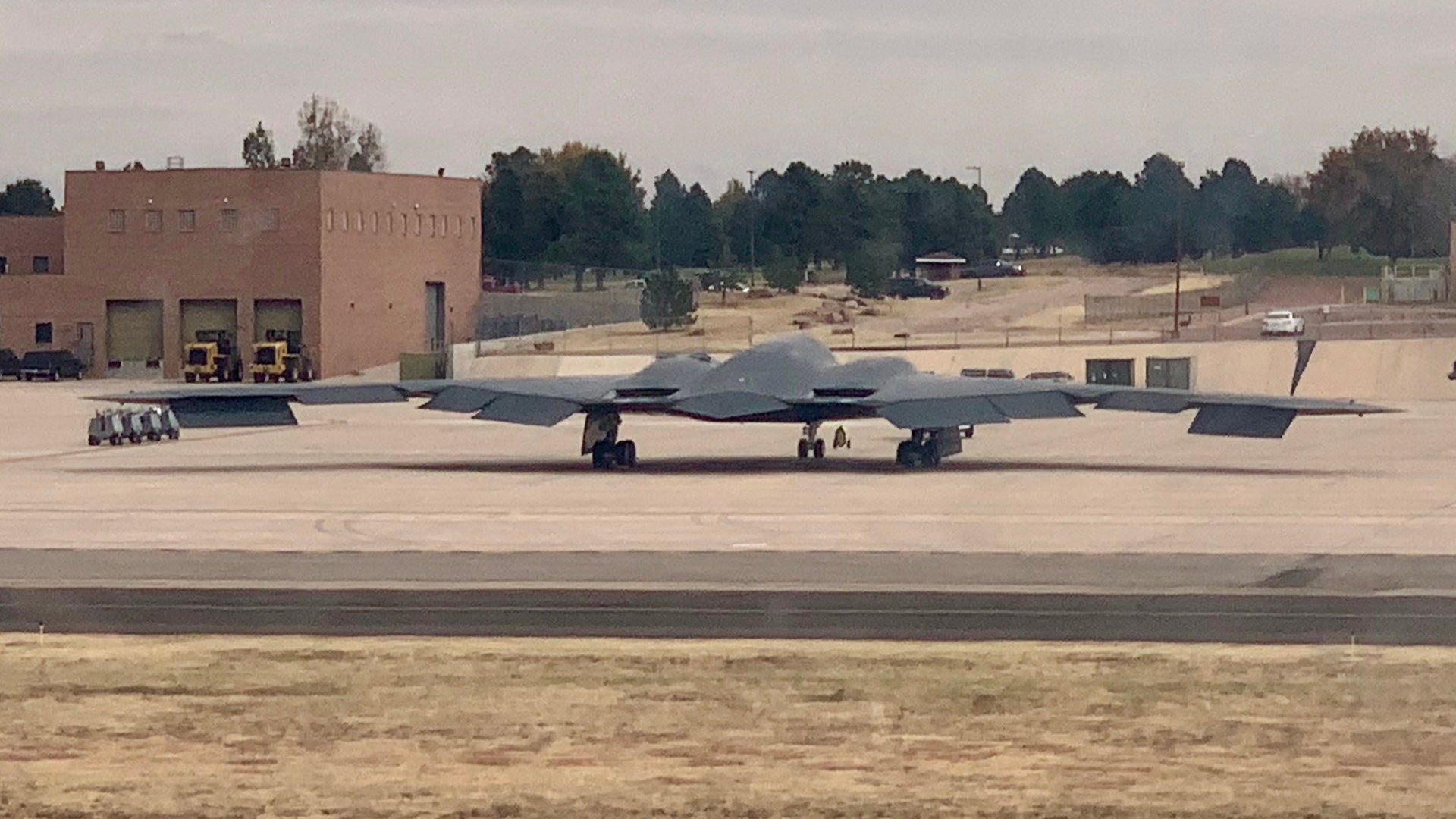In the wee hours of the morning, around 3:20am local time, a B-2A Spirit flying high over Colorado on a training flight from its home base at Whiteman AFB in Missouri declared an in-flight emergency. The aircraft would have to land immediately and the closest airport was in Colorado Springs. Hours after safely touching down, the bat-winged bomber—the most expensive aircraft ever made—was photographed sitting alone on the apron at Peterson AFB, which is colocated with the civilian airport. It was a strange sight indeed, especially considering these aircraft traditionally only fly out of four highly secure air bases on anything that comes close to resembling a regular basis. What brought the B-2 crew’s mission to a sudden halt remained a mystery throughout the day, but now we know at least one major cause.
Audio recorded of Colorado Springs Airport tower from the time of the incident has emerged on Facebook. In it, the controller states that the jet has lost its #4 engine. In addition, the crew could not communicate with the tower directly, which could be a sign of additional complications. In the end, the most advanced aircraft ever put into production ended up getting cleared to land via a visual signal from the tower’s handheld light gun.
Here is a direct link to the Facebook posting in case it doesn’t show up automatically below:
Engine failures do happen, but with certain airframes, flying on just three of four engines can involve elevated risk. Flying wings in particular, due to their lack of vertical tails and large rudders to counter-act asymmetric thrust, can be uniquely vulnerable to the impacts engine loss. This is especially true when two engines are lost on the same side at the same time. Aircraft handling characteristics and safe operating envelope margins can narrow dramatically under these types of conditions and we really don’t know what the B-2’s limits are in regards to them.
Multiple sources also report that at least one of the pilots was administered oxygen by the emergency response crews after the jet was safely on the ramp. It is not clear if this was due to the stressful situation or because of larger systems issues experienced during the incident. Smoke in the cockpit could also be a reason for administering oxygen after landing, but we just don’t know the exact circumstances around this part of the event.


Photos taken of the B-2 on the ramp in Colorado show the aircraft’s auxiliary air inlet doors open on the left side and closed on the right. This is unusual. We don’t know if the right-side inlet doors were stuck closed during landing—they are open during terminal phases of flight—or if the left side failed to close upon shutting down. Regardless, thankfully everyone was safe and a very low-density, high-value asset also came out unscathed.
The incident comes nearly six months after a B-1B made an emergency landing at Midland International Air and Space Port in Midland, Texas after experiencing a severe engine fire. The crew had decided to eject from the stricken plane, but the ejection sequence failed for the first crewmen that was to be shot out of the cockpit. The crew then decided to make an emergency landing as they wouldn’t leave their stuck comrade in the aircraft to die after they ejected. Everyone survived the incident but issues with the ejection systems on some of the B-1s remain unmitigated.
We will report back when we discover more details surrounding the B-2’s emergency diversion to Colorado Springs.
Update: 11am PDT—
It’s worth mentioning that the fact the tower could not see the aircraft as it was on final approach and couldn’t track it farther out may point to the possibility that its lighting system was offline as well as its transponder.
A special thanks to Geoffrey Marr for allowing us to use his images for the top shot and in the body of this article. You can check out more of Geoffrey’s shots here.
Contact the author: Tyler@thedrive.com

